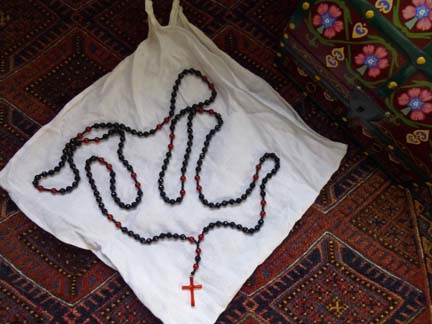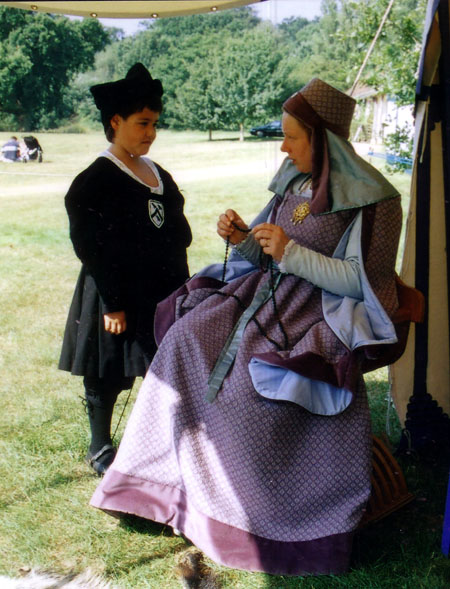| Archery |
| Brewing |
| Calligraphy & writing |
| Combat |
| Cooking |
| Dance |
| Etiquette |
| Household life |
| Medicine |
| Music |
| Needlework |
| Playacting |
| Religion |
| Storytelling |
| Saying the Rosary is a form of devotional meditation. The Rosary uses two types of bead, one type for the Paternoster, one for the Ave. A crucifix serves as the point of commencement. A full rosary consists of fifteen "decades", each decade of ten Aves separated by a Paternoster. However, it was far more common to use a rosary of five decades and say it three times over. A poor man might only have a single decade: he was unlikely to have the time or inclination for fifteen repetitions. Thus working folk could space their meditation throughout the day. |

Lady Anne's Rosary laid out on her fine, linen wimple as she prepares to go to bed. It has beads of jet for the Aves and pairs of carnelian for the Paternosters. |
For the sake of re-enactors who ought to be able to say the Rosary they carry with them, here are the words of the Paternoster together with as literal a translation as possible to help you make the most obvious connections between the Latin words and their meanings. It is so much easier to learn if you know what you are saying - please note that Latin doesn’t need articles - “a” and “the” or words like “of” and “with”- since the form the words take indicate the subject, object and “case” of each sentence:
|
When you have said the words of these prayers umpteen hundred
times, you will no longer need - or be able - to concentrate solely on
the words themselves. At this point you focus your thoughts in a devotional
exercise.
You can now now appreciate how, by saying the Rosary, you have meditated on all the most important events of the life of Christ.
|

Lady Anne teaching a page to say the Rosary |